5 Facts About Childhood Cancer Survivors
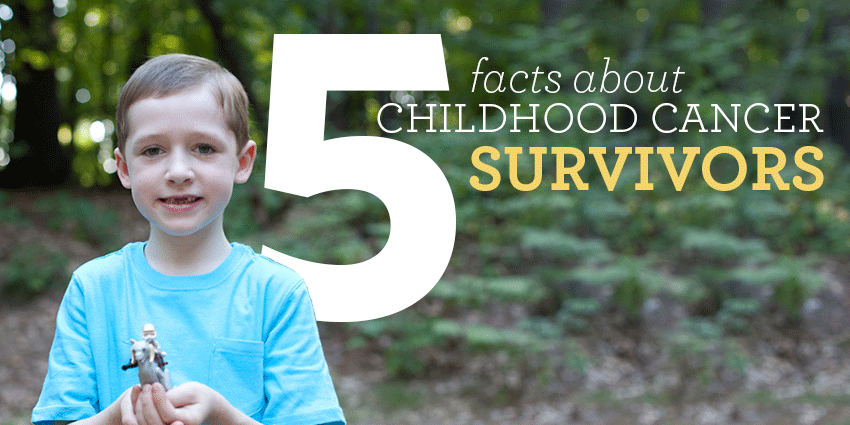
1. Each year, more children diagnosed with cancer will be cured, joining the growing population of long-term childhood cancer survivors.
Thanks to advances in chemotherapy, radiation and surgical techniques, more children and adolescents are being cured of cancer every year. Today, there are over 420,000 survivors of childhood cancer in the United States, representing approximately 1 in 750 young adults, and that number is expected to exceed 500,000 by the year 2020.
AML and St. Baldrick’s: A Continuing Story of Progress
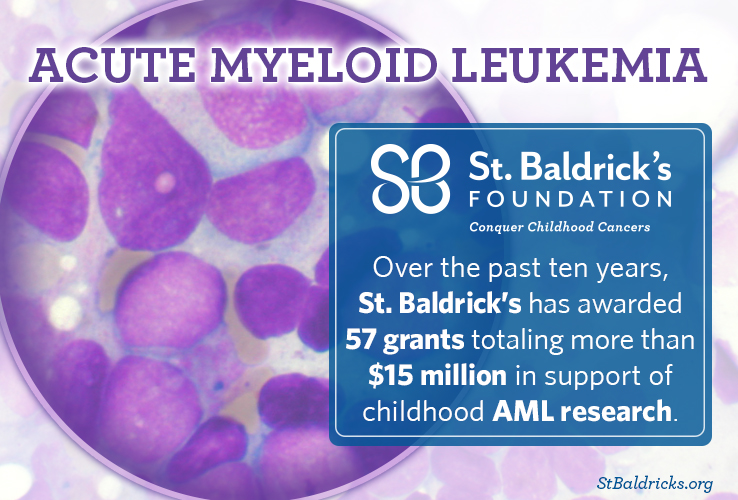
With its recent commitment of $500,000 for the Target Pediatric AML initiative, the St. Baldrick’s Foundation adds another chapter to its long story of support for innovative and impactful research in childhood acute myeloid leukemia (AML).
While great progress has been made over many decades to help children survive the most common childhood cancer – acute lymphoblastic leukemia (ALL) – the same has not held true for children with AML.
St. Baldrick’s is helping change that.
St. Baldrick’s Scholar Searches for Leukemia’s Weak Spots
It is said that to defeat an enemy, you must know them — and that’s exactly what St. Baldrick’s Scholar Dr. Grzegorz Nalepa is doing. The enemy? Childhood cancer. His weapon? Genomics — the study of all the genes within an organism, like a human child with cancer for instance. Who is winning? Read on to find out. (Hint, hint…it’s the good guy.)
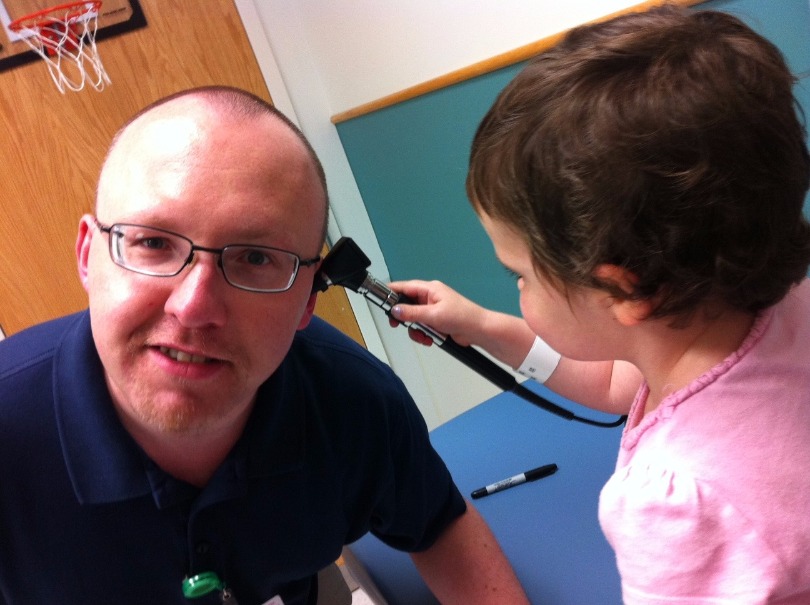
St. Baldrick’s Scholar Dr. Grzegorz Nalepa amuses a young patient by making her the doctor, instead of him.
For St. Baldrick’s Scholar Dr. Grzegorz Nalepa, childhood cancer treatment can’t be one-size-fits-all. To be successful, it needs to be personal.
That’s why this physician-scientist studies what makes everyone unique, including kids with cancer – genes.
With support from St. Baldrick’s and a deep passion for the field of genomics, Dr. Nalepa is studying how the genetic changes, or mutations, present in kids with leukemia can be exploited to create targeted therapies against that cancer, with few side effects.
What Is Immunotherapy?
St. Baldrick’s Scholar Dr. David Barrett gives us an inside look at immunotherapy, and we meet the first pediatric patient to ever receive this new cancer treatment.
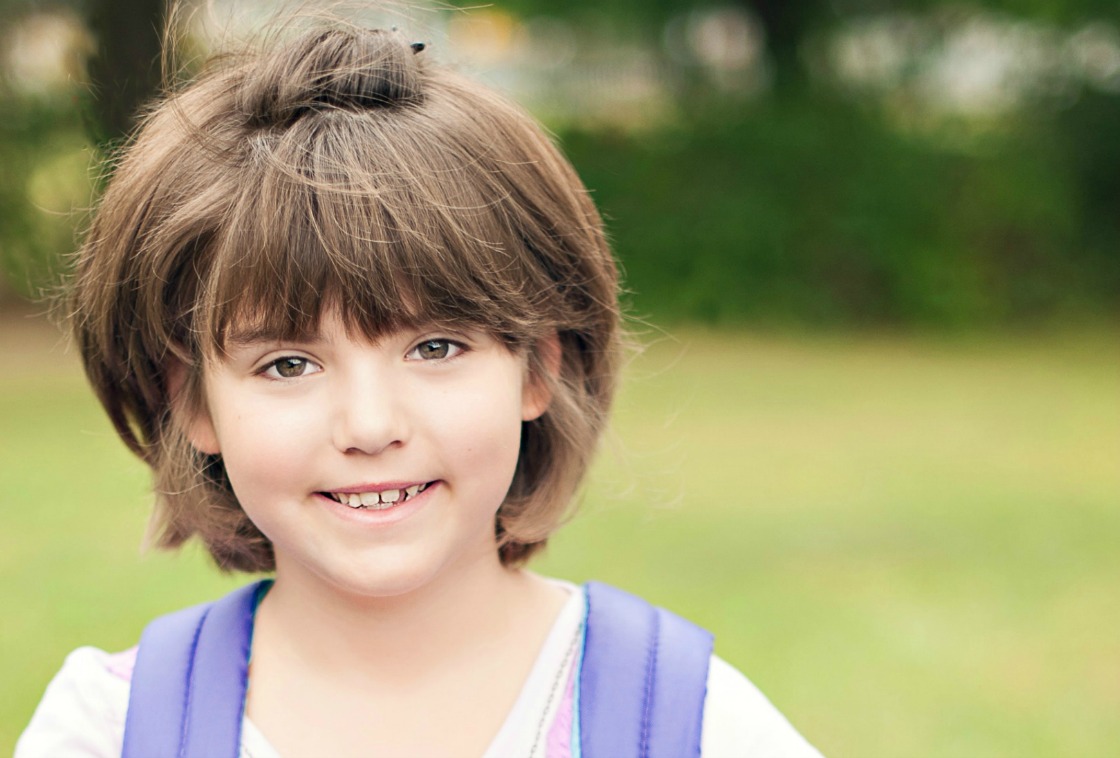
Emily Whitehead, the first pediatric patient to be treated with immunotherapy, 18 months post-treatment and starting third grade.
For most of us, our immune systems fight off disease every day. A healthy immune system can even fight off life-threatening diseases like cancer. And when we do get sick, a healthy immune system attacks sickness and help us get back to feeling like ourselves again.
It is a different story for kids with cancer. A child with cancer has a suppressed immune system. It’s as if a blindfold has been pulled down, and the body is unable to target invasive cells. You might say the immune system is asleep.
What if doctors could wake up a sleeping immune system?
Through Research My Son’s Star Still Shines Bright
Diagnosed with a rare sarcoma when he was a toddler, Honored Kid Alan passed away five years ago. With his chubby-cheeked grin and bright personality, the 2014 St. Baldrick’s Ambassador has inspired all of us — and as his mom writes in this blog, Alan’s impact continues to be felt in a big, brilliant way. Read on to learn how…
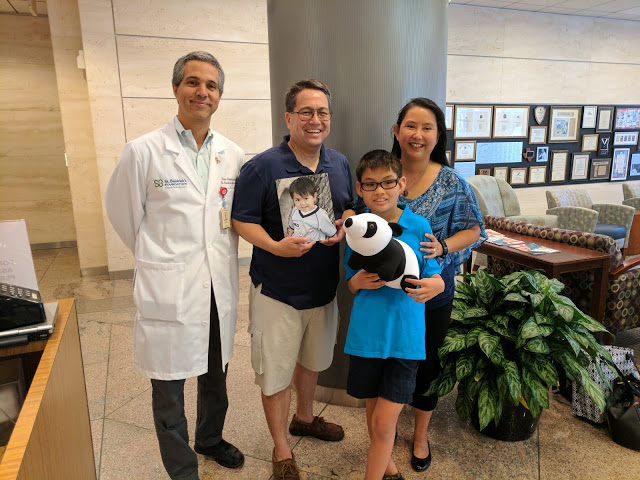
Dr. Nino Rainusso meets with Alan’s family, plus Hilly the bear, a stuffed panda purchased in Washington D.C. to represent Alan’s lost opportunities.
Four years ago, we established a Hero Fund with the St. Baldrick’s Foundation to raise money for sarcoma research in Alan’s memory. Last July we were thrilled to share that the fundraising we had done through Alan’s Sarcoma Research Fund had given us the opportunity to name a grant.
Dr. Nino Rainusso of Baylor College of Medicine at Texas Children’s Hospital would be named the Alan’s Sarcoma Research Fund St. Baldrick’s Scholar for his work in identifying and examining the most difficult-to-treat cancer cells from patients at Texas Children’s.
Teaching Good Cells to ‘See’ Cancer: Researcher Uses CAR T Cells to Help Kids Like Zach [VIDEO]
From CAR T cell therapy in May to a bone marrow transplant in June, over the past few weeks we’ve been following the tremendous journey of Honored Kid Zach Swart. Now we bring you another angle — a closer look at the St. Baldrick’s-funded research that has changed Zach’s life.
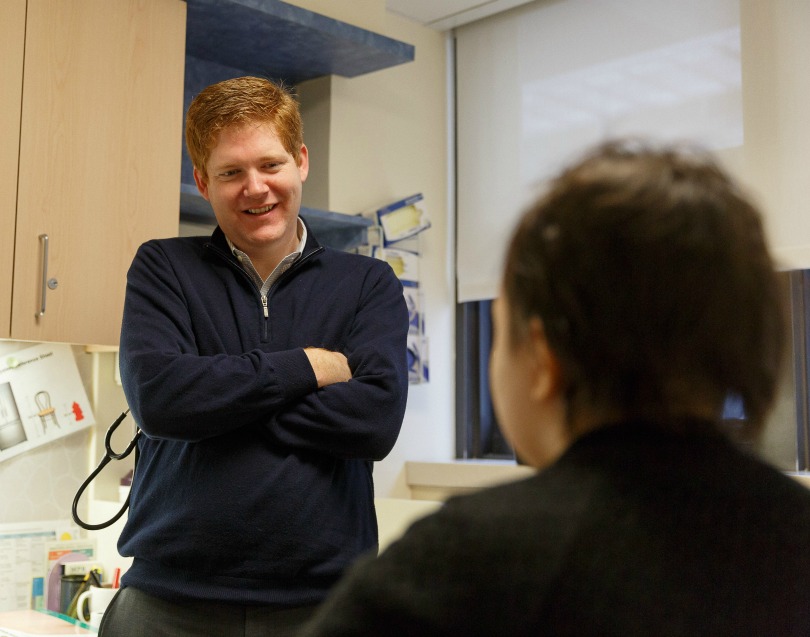
St. Baldrick’s researcher Dr. Kevin Curran meets with a patient at Memorial Sloan Kettering Cancer Center.
A couple months ago, Zach Swart went through yet another medical procedure; one more to add to an already substantial history of biopsies and blood draws.
But this procedure was different than a typical needle poke.
Three-Time Cancer Fighter Gets Another Chance at Life [VIDEO]
Honored Kid Zach has faced leukemia three times since he was 6 years old. On Wednesday, after 10 years of fighting, he hopes that this is it — that a bone marrow transplant will put him in remission for good. Learn about his tremendous journey and why children’s cancer research is important to him.
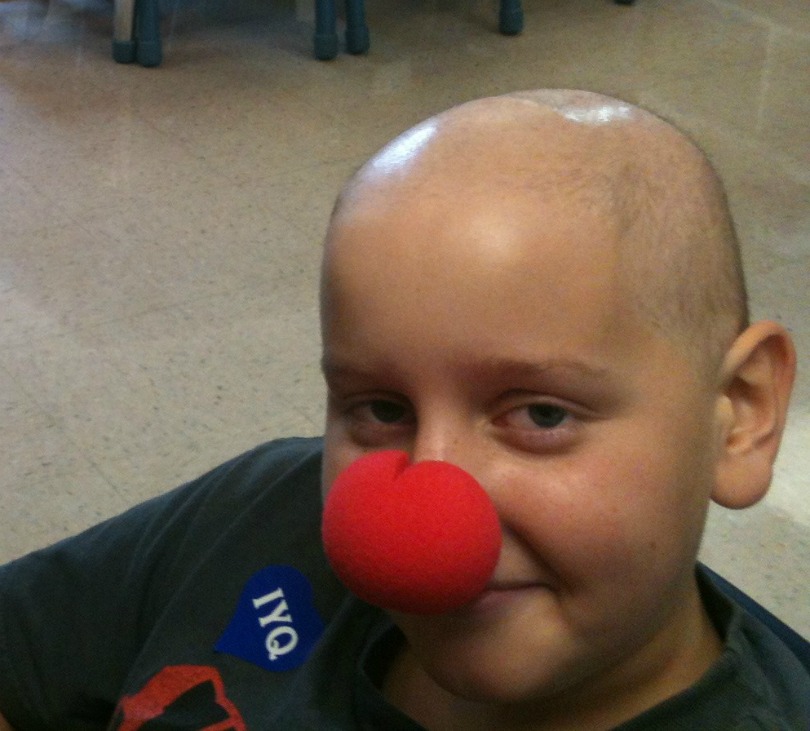
Zach clowns around during treatment.
Wednesday is a big day for 15-year-old Zach. After two relapses and years of childhood lost to cancer, it’s a new start.
St. Baldrick’s Researcher Rethinks Childhood Cancer Treatment
Dr. Noah Federman first decided to become a doctor because he wanted to help people. Mission accomplished, Dr. Federman. Over his years as a physician, he’s helped countless children with cancer, including cancer survivors like 2013 St. Baldrick’s Ambassador Emily. Read on for more about Dr. Federman, his St. Baldrick’s Scholar award and what he envisions for the future of childhood cancer research.
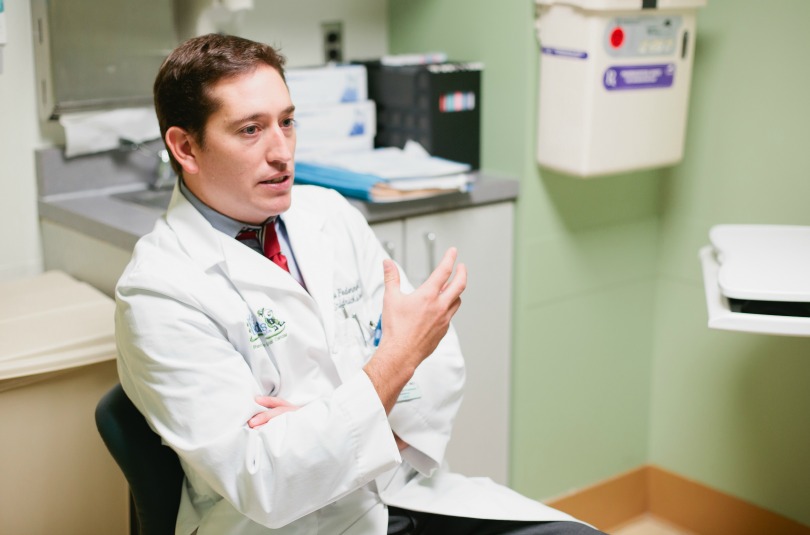
Dr. Noah Federman meets with a patient.
Dr. Noah Federman first met Emily back at the very beginning, soon after she discovered a persistent bump on her right leg — the first sign of a bone cancer called osteosarcoma.
The St. Baldrick’s Scholar has been there for Emily ever since, through the ups and downs of treatment, through her surgery and even now during survivorship, as she prepares to celebrate five years cancer free.
It’s a proud moment for Dr. Federman.
He became a doctor to make a difference in the lives of children like Emily — to help them beat cancer, get out of the hospital, and grow up healthy and happy.
How Immunotherapy Saved Phineas [VIDEO]
“Our son would not be with us today if it weren’t for St. Baldrick’s,” says Phineas’ dad, Carlos. Read on to see how research saved the little boy’s life.
VIDEO: Phineas’ Story >
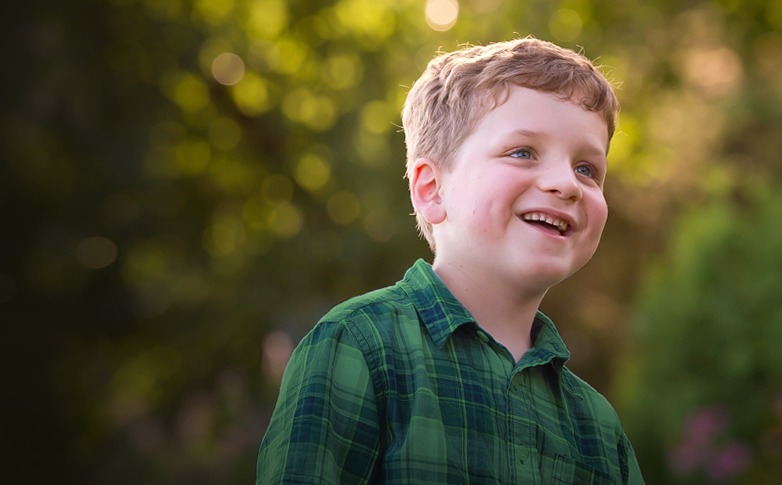
On a mountain bike ride with a friend, 9-year-old Phineas was sailing along when he decided to take a risk and pedal over a bridge not meant for bicycle traffic. He wiped out in a big way.
But without so much as a single tear, he picked himself up, dusted himself off, and got back on the bike.
Compared to what this boy had been through two years before, that was nothing.
A Tale of Two Worlds: Emily’s Story of Survival
Today is National Cancer Survivors Day and in celebration, we are bringing you the survivorship story of 2013 Ambassador Emily, who was diagnosed with osteosarcoma as a 16-year-old. Now nearing five years cancer free, she’s a huge advocate for kids’ cancer research. She wants to see all kids with cancer leave the childhood cancer world behind — for good. Read on for more about Emily, her treatment and its effects, and what it’s like to be a survivor.
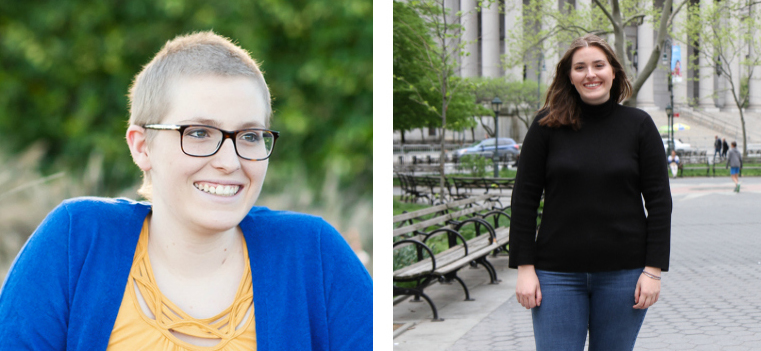
Emily in 2013, during her treatment for cancer (left) and Emily last month (right) in New York City, which she’s made her home after graduating from New York University.
Emily lives in two worlds.
In one, she just graduated from New York University, is cruising the Adriatic Sea over the summer, and snagged her dream job in television production.
The other world is different.
« Newer PostsOlder Posts »

 SBF
Tweets »
SBF
Tweets »